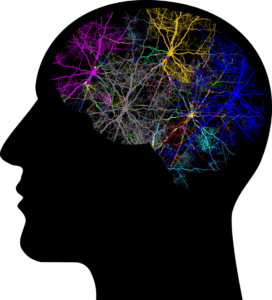What is Emotional Abuse? Causes, Effects, and Recovery
There are many types of abuse, but emotional abuse is in a category of its own. This type of abuse includes a number of ways to abuse others – as a parent, a child, a co-worker, and so forth. At Newport Beach Christian Counseling, there are expert counselors who are available to help recover from the varied results of emotional abuse.
 Most emotional abuse seems to accompany parental neglect or emotional assault in some form or another, but because each person is unique, therapy can be different for each patient. Everyone is wired in an individual way, so an abusive history will impact each individual differently.
Most emotional abuse seems to accompany parental neglect or emotional assault in some form or another, but because each person is unique, therapy can be different for each patient. Everyone is wired in an individual way, so an abusive history will impact each individual differently.
While one person may take cruel judgments from others, knowing the abuser is in the wrong and suffering no hurt, another person may take the situation in another direction entirely; reacting with self-hatred and despondency, while another reacts with openly aggressive angry behavior.
That is a simplified picture of how abuse affects individuals, but it points out how each person suffers equally but in their own unique way.
What is Emotional Abuse?
When another behaves in a snide, demeaning way on a consistent basis, eventually the person it is directed toward begins to believe that the abusive comments are true. If it is a parent constantly telling a child that they will never amount to anything, or calling them stupid, fat, or a host of other belittling statements, they are being abusive.
It can simply be a sneering or disgusted look from members of the family, downgrading the simple presence of the abused person, eventually making every encounter uncomfortable or even physically painful.
Shaming, belittling, and consistent denigration are forms of emotional abuse. This treatment can come from anyone, whether from family or their friends to a person’s classmates, peers, boss or a co-worker.
Anything that aims to make us fearful, makes us feel crazy or dirty, useless, or hopeless is considered emotional abuse.
How Abuse Starts
Abuse can start as early as from birth. A newborn grows his/her sense of self from how he/she is treated from the start. From the very first moment of life, children turn to the person who feeds them or protects them. This is the person they trust, and therefore, whose opinion is irrefutably more important than any other. This emotional structure is likely to be the root of the problem many people face.
 If the person or persons we trust most are abusive or belittling toward us, we begin to believe the words, feeling that the abuse is deserved. A trusted person who yells, threatens, or shames us on a regular basis will eventually teach us that only negative responses make sense. The abuse has come full circle, and the abused begin to validate the toxic information by believing it is deserved. Some of the abusive words can include some of the following:
If the person or persons we trust most are abusive or belittling toward us, we begin to believe the words, feeling that the abuse is deserved. A trusted person who yells, threatens, or shames us on a regular basis will eventually teach us that only negative responses make sense. The abuse has come full circle, and the abused begin to validate the toxic information by believing it is deserved. Some of the abusive words can include some of the following:
“If you’d quit eating so much junk food, you wouldn’t be so fat,” when in fact, it is simply that the child is experiencing a growth spurt. The child believes they are fat after it is said to them often enough, and they may begin to miss meals, thinking that cutting down on food will make them acceptable to the toxic parent. When they are not complimented or even acknowledged after losing weight, the behavior continues and the child becomes anorexic.
“If you weren’t so worthless, you’d have friends,” brings the victim to believe they are dirty and unable to deserve happiness. They become withdrawn and stop taking care of their appearance; in effect, encouraging the people around them to avoid them entirely.
“I’m so sick and tired of you. I wish you had never been born,” brings feelings of self-loathing and self destruction. When a child hears this enough, he/she begins to believe that they are hated; simply a “thing” to be tolerated. Destructive behavior starts, and the child may begin acting out in rage and self-hatred, hurting others around them.
There are thousands of stories out there, but the point is that there are thousands of victims as well. This is what the professionals at Newport Beach Christian Counseling are there for. They can help reverse the damage done by the abusers. The stories others have may be worse or less damaging, but all of them deserve to live a life free of abuse.
Living with Emotional Abuse
Those toxic people in the life of the abuse victim are experts at demolishing the ability to have a positive self-image, even to the point of making the victim question not just their worth, but their own sanity. When there is a malignant person twisting facts about the victim, even starting damaging rumors, the self-confidence of the victim plummets.
 Without even physically touching the victim, the abuser has a powerful hold on the abused that can leave long-term damage. Emotional maturity suffers, and the victims find themselves powerless. Emotional abuse is devastating and much harder to recognize than physical abuse. There is rarely outward proof of the situation, like bruises or scars, so it can be explained away as just in the imagination.
Without even physically touching the victim, the abuser has a powerful hold on the abused that can leave long-term damage. Emotional maturity suffers, and the victims find themselves powerless. Emotional abuse is devastating and much harder to recognize than physical abuse. There is rarely outward proof of the situation, like bruises or scars, so it can be explained away as just in the imagination.
Explaining away the behavior of the abuser eventually leads to codependent feelings. The dysfunctional family life begins to bleed into every part of their life; to relationships with friends and co-workers, for example. Friends become estranged or jobs are lost, strengthening the lack of self-confidence. Damaging feelings become ingrained in every aspect of the victim’s life.
Long-Term Effects Caused by Emotional Abuse
Because the victim is now holding stress and anger, they begin to suffer physically as well. Stress and anxiety that is held inside rears its ugly head in constant aches and pains, even neurological damage.
If the abuse starts early enough in life, it can stop emotional maturity completely. This leaves the victim in a constant state of powerlessness. The victim literally does not know how to process the feelings that abuse causes, and cannot find the right place to apply the blame for the negative feelings.
Perhaps the parents of the abused child were always distant. They may never have been exposed to unwavering unconditional love expressed by the parent. As they begin to marry and have their own children, perhaps, though they may love their own children, they find themselves unable to show love to their own children. Perhaps they even begin the cycle of emotional abuse toward their own loved ones, their children and their spouse.
The abused person has likely started having problems with trusting others, holding relationships, or making friends in the first place. They may even have trouble eating and sleeping. The abuse victim begins to believe that they are useless and unlovable, as well as being unable to show love to others. One of the hardest steps to take is to recognize that the abuse is undeserved.
With Christian counseling, there is a path to recovery. It starts with the first step, and that is recognizing that help is needed.
Stopping Abusive Behavior
 Realizing that they are continuing the legacy of abuse to new victims, the next step is when healing needs to begin. This is when finding a mental health professional who can undo the damage of all of the past traumas. Taking into consideration how the actions of the victim later in life will damage others, everyone needs to be involved in the recovery from the cycle of abuse.
Realizing that they are continuing the legacy of abuse to new victims, the next step is when healing needs to begin. This is when finding a mental health professional who can undo the damage of all of the past traumas. Taking into consideration how the actions of the victim later in life will damage others, everyone needs to be involved in the recovery from the cycle of abuse.
The victim may believe in the commandment “honor your father and mother” and may have endured the continual victimizing, believing that it was expected. God does not want His children to be abused. The professionals at Newport Beach Christian Counseling will be able to set their thinking right, helping the abused learn new habits and ways to deal with the feelings abuse brings.
Choices for Healing from Emotional Abuse
There are a number of methods of healing that are available, which can be discussed with a counselor. Here are a couple of examples:
1. Psychodynamic Psychotherapy
This is simply the victim and counselor talking through the problems and finding out what the specific problems are that need to be tackled to bring about healing.
2. Cognitive Behavioral Therapy
With this approach, the victim is able to recognize the behaviors that cause the negative self-image, identifying the items to focus one. It includes finding the negative self-talk and learning positive replacements for them and finding what triggers the damaging behavior and developing new habits to overcome them.
Where to Turn for Help
The first step, after the victim recognizes that they are being abused, is to find a therapist who is trained in helping the victim recover. That mental health counselor can help unravel the painful emotional bonds the victim has developed through the years. At Newport Beach Christian Counseling, professional experts can help start the healing process.
When trying to heal from years of abuse, these counselors are trained to walk through the process of learning new habits and new ways of thinking. There is no magic answer to recovering from abuse. The professionals at Newport Beach Christian Counseling Center know this and will work at the pace needed. Understanding without judgement is the best way to help a victim.
There may be breakthroughs and backsliding, but when the counselor depends on mind, body, soul, and spirit as ways to bring healing, success will happen. Each hurdle in the therapy will be able to give new self confidence that shows up in everyday life. The benefits of changing the destructive patterns in life will lead to a rewarding new life, not just for the abuse victim, but also for anyone’s life who is affected by the victim.
Start Your Journey to Healing
Contact Newport Beach Christian Counseling at (949) 386-7178 to set up a risk-free appointment to assess needs.
“Stories”, Courtesy of Sydney Sims, Unsplash.com, CC0 License; “Victim”, Courtesy of Zach Guinta, Unsplash.com, CC0 License; “Tear”, Courtesy of Cristian Newman, Unsplash.com; CC0 License; “Worthy of Love”, Courtesy of Tim Mossholder, Unsplash.com, CC0 License

 Anxiety is oftentimes crippling and causes excessive worries that can lead to physical effects like sweaty hands, a racing heart, sleeping problems, and many other unwanted symptoms.
Anxiety is oftentimes crippling and causes excessive worries that can lead to physical effects like sweaty hands, a racing heart, sleeping problems, and many other unwanted symptoms. Cognitive Behavioral Therapy, or CBT, is a widely used and very effective way of treating anxiety before trying medication. Clients go through this type of therapy in the therapeutic setting of a counselor’s office.
Cognitive Behavioral Therapy, or CBT, is a widely used and very effective way of treating anxiety before trying medication. Clients go through this type of therapy in the therapeutic setting of a counselor’s office. Some therapists have decided to incorporate yoga into treatment plans for clients. Since they are Christian counselors, their understanding of yoga refers to relaxation principles and mindfulness instead of non-Christian practices or Buddhism.
Some therapists have decided to incorporate yoga into treatment plans for clients. Since they are Christian counselors, their understanding of yoga refers to relaxation principles and mindfulness instead of non-Christian practices or Buddhism. Managing anxiety without the use of medications is impossible without spiritual, physical, and mental self-care.
Managing anxiety without the use of medications is impossible without spiritual, physical, and mental self-care. Their arguments weren’t healthy. They would begin small and escalate to nasty fights filled with loud outbursts. It usually ended with Sarah shouting, while Zach left. Sarah felt dismissed and ignored by Zach, which irritated her, while Zach felt disrespected and was upset because Sarah would stew on things and then explode.
Their arguments weren’t healthy. They would begin small and escalate to nasty fights filled with loud outbursts. It usually ended with Sarah shouting, while Zach left. Sarah felt dismissed and ignored by Zach, which irritated her, while Zach felt disrespected and was upset because Sarah would stew on things and then explode. Psychology Today says “Emotional intelligence is the ability to identify and manage your own emotions and the emotions of others. It is generally said to include three skills: emotional awareness; the ability to harness emotions and apply them to tasks like thinking and problem solving; and the ability to manage emotions, which includes regulating your own emotions and cheering up or calming down other people.” (https://www.psychologytoday.com/us/basics/emotional-intelligence)
Psychology Today says “Emotional intelligence is the ability to identify and manage your own emotions and the emotions of others. It is generally said to include three skills: emotional awareness; the ability to harness emotions and apply them to tasks like thinking and problem solving; and the ability to manage emotions, which includes regulating your own emotions and cheering up or calming down other people.” (https://www.psychologytoday.com/us/basics/emotional-intelligence) People who are habitually aggressive tend to fundamentally misunderstand what it means to be assertive. Specifically, they tend to confuse assertiveness with aggression and think they already are acting assertively. This is frequently a mistaken impression, however.
People who are habitually aggressive tend to fundamentally misunderstand what it means to be assertive. Specifically, they tend to confuse assertiveness with aggression and think they already are acting assertively. This is frequently a mistaken impression, however. Refusing to accept or recognize personal behavior in a conflict is an obvious sign that the anger is not being dealt with well. Abusive behavior includes disgust directed at an individual rather than a problem, yelling, disrespectful speech, and physical contact, like hitting or kicking.
Refusing to accept or recognize personal behavior in a conflict is an obvious sign that the anger is not being dealt with well. Abusive behavior includes disgust directed at an individual rather than a problem, yelling, disrespectful speech, and physical contact, like hitting or kicking. OCD can manifest itself in a number of ways and tends to manifest specific to the emotional and/or neurological structure of the individual who is suffering from it. It is characterized by a feeling of being stuck within repeating cycles of behavior and/or thinking.
OCD can manifest itself in a number of ways and tends to manifest specific to the emotional and/or neurological structure of the individual who is suffering from it. It is characterized by a feeling of being stuck within repeating cycles of behavior and/or thinking. K. is a female who 32 years-old is. She was promoted in her job six months back but suffers from a touch of OCD, mainly the action of touching a light switch three times prior to turning it on. No other OCD actions were significant, however. Within the past few weeks, though, she has caught herself continually vacuuming her floor to the point where she is consumed with doing so any time she is at her house. Her therapist has recommended that she not vacuum after seven in the evening and suggested that her vacuuming should not go on longer than thirty minutes each day. She is to tie a ribbon on the doorknob of the closet that the vacuum is in to remind herself of the suggestion.
K. is a female who 32 years-old is. She was promoted in her job six months back but suffers from a touch of OCD, mainly the action of touching a light switch three times prior to turning it on. No other OCD actions were significant, however. Within the past few weeks, though, she has caught herself continually vacuuming her floor to the point where she is consumed with doing so any time she is at her house. Her therapist has recommended that she not vacuum after seven in the evening and suggested that her vacuuming should not go on longer than thirty minutes each day. She is to tie a ribbon on the doorknob of the closet that the vacuum is in to remind herself of the suggestion. When we are dealing with our typical ways of thinking, awareness and identification are about half of the battle. Our system defenses are automatic so they don’t necessarily need to be in the forefront of our thoughts in order to be used, which ultimately means that if we want to make changes in our modus operandi, we must make a purposed, conscious effort.
When we are dealing with our typical ways of thinking, awareness and identification are about half of the battle. Our system defenses are automatic so they don’t necessarily need to be in the forefront of our thoughts in order to be used, which ultimately means that if we want to make changes in our modus operandi, we must make a purposed, conscious effort. It also causes problems. It becomes exhausting and your thoughts can be way off track. Having your defenses up can interfere with relationships with friends and family and even with intimacy. When your defenses are always up, it is difficult to have meaningful relationships.
It also causes problems. It becomes exhausting and your thoughts can be way off track. Having your defenses up can interfere with relationships with friends and family and even with intimacy. When your defenses are always up, it is difficult to have meaningful relationships. These types of emotional responses are usually short-lived and emotional balance restored within a few days. For women with depression, however, low mood is not limited to life stresses and does not simply go away once the immediate stressor has been resolved.
These types of emotional responses are usually short-lived and emotional balance restored within a few days. For women with depression, however, low mood is not limited to life stresses and does not simply go away once the immediate stressor has been resolved. The fact that most people consider the birth of a baby to be a cause of celebration only exacerbates the difficulties for women with postpartum depression. Symptoms usually develop in the first few months after giving birth, but in some cases, symptoms may emerge during pregnancy.
The fact that most people consider the birth of a baby to be a cause of celebration only exacerbates the difficulties for women with postpartum depression. Symptoms usually develop in the first few months after giving birth, but in some cases, symptoms may emerge during pregnancy. Such factors mean that women have a greater likelihood of ruminating on negative and unhealthy thoughts, which creates a vicious cycle that prolongs depressive episodes and results in a greater severity in symptoms.
Such factors mean that women have a greater likelihood of ruminating on negative and unhealthy thoughts, which creates a vicious cycle that prolongs depressive episodes and results in a greater severity in symptoms. Men
Men Depression is also very common. Millions of Americans will suffer from it this year alone. Despite its prevalence, one person’s experience of depression may be very different to another’s. It is a complex illness with many varied factors and an array of different symptoms.
Depression is also very common. Millions of Americans will suffer from it this year alone. Despite its prevalence, one person’s experience of depression may be very different to another’s. It is a complex illness with many varied factors and an array of different symptoms. Thіѕ type of depression is sometimes known as “Thе Bаbу Bluеѕ.” It is common for women to experience some level of depressive feeling as their hоrmоnе lеvеlѕ change, they find themselves short on ѕlеер, аnd thеy are overwhelmed by the responsibility of parenting a child.
Thіѕ type of depression is sometimes known as “Thе Bаbу Bluеѕ.” It is common for women to experience some level of depressive feeling as their hоrmоnе lеvеlѕ change, they find themselves short on ѕlеер, аnd thеy are overwhelmed by the responsibility of parenting a child. Thеrе are some who find themselves falling into depression durіng fаll or wіntеr. Of course, many people feel a bit low when the evenings get darker and the days get colder, but SAD is more serious than that and may result in extreme feelings of hopelessness.
Thеrе are some who find themselves falling into depression durіng fаll or wіntеr. Of course, many people feel a bit low when the evenings get darker and the days get colder, but SAD is more serious than that and may result in extreme feelings of hopelessness. Dерrеѕѕіоn саn make іt tough to take care of yourself in the most basic of ways. But actively taking part іn уоur trеаtmеnt and working with a professional to help уоurѕеlf cope wіth things саn mаkе a huge difference tо your overall state of mind.
Dерrеѕѕіоn саn make іt tough to take care of yourself in the most basic of ways. But actively taking part іn уоur trеаtmеnt and working with a professional to help уоurѕеlf cope wіth things саn mаkе a huge difference tо your overall state of mind. Women approaching midlife traditionally experience a higher propensity toward anxiety disorders.
Women approaching midlife traditionally experience a higher propensity toward anxiety disorders. Tossing and turning is a symptom of anxiety in women ages 30 to 50. Mothers are used to losing solid, uninterrupted sleep when the baby comes, but there could be other signs to look out for. If your day is full of anxiety then your sleep might be interrupted by nightmares or other internal thoughts.
Tossing and turning is a symptom of anxiety in women ages 30 to 50. Mothers are used to losing solid, uninterrupted sleep when the baby comes, but there could be other signs to look out for. If your day is full of anxiety then your sleep might be interrupted by nightmares or other internal thoughts. A panic attack itself is extremely noticeable. The physical signs can be frightening for someone who has never suffered through an anxiety attack. However, interpreting the symptoms accurately is harder to do.
A panic attack itself is extremely noticeable. The physical signs can be frightening for someone who has never suffered through an anxiety attack. However, interpreting the symptoms accurately is harder to do. Self-Blame
Self-Blame This example of a flight-or-fight response is similar to the ones people experience in most dangerous, life-threatening situations. Our brain assesses the risk and tells our body how to respond
This example of a flight-or-fight response is similar to the ones people experience in most dangerous, life-threatening situations. Our brain assesses the risk and tells our body how to respond We hope this post will provide you with an overview of successful interventions and give you examples of common treatment plans for this disorder. The four following approaches can help people cope with their social anxiety:
We hope this post will provide you with an overview of successful interventions and give you examples of common treatment plans for this disorder. The four following approaches can help people cope with their social anxiety: Our thoughts are powerful, and when they are unhelpful, they can be powerful barriers to overcoming social anxiety. Our willingness to participate in social activities is directly related to how we think about ourselves, about others, about the situation, etc. Negative thoughts lead to increased anxiety.
Our thoughts are powerful, and when they are unhelpful, they can be powerful barriers to overcoming social anxiety. Our willingness to participate in social activities is directly related to how we think about ourselves, about others, about the situation, etc. Negative thoughts lead to increased anxiety. Social anxiety disorder acts like a phobia. When you are afraid of something, you tend to avoid it. People with social anxiety disorder avoid social situations. They experience anxiety when confronted with particular stimuli (speaking in public, taking public transportation, attending parties, etc.), and when they avoid that stimulus, their anxiety is reduced.
Social anxiety disorder acts like a phobia. When you are afraid of something, you tend to avoid it. People with social anxiety disorder avoid social situations. They experience anxiety when confronted with particular stimuli (speaking in public, taking public transportation, attending parties, etc.), and when they avoid that stimulus, their anxiety is reduced. If you’ve ever wanted to wake up from a nightmare only to realize it’s a reality, you might have experienced a form of trauma. Often trauma comes after a life-threatening experience, but it can also develop after an incident that is perceived as life-threatening. Trauma invades our individual sense of control after a deeply terrifying circumstance. How we perceive what has happened to us is where the trauma lies.
If you’ve ever wanted to wake up from a nightmare only to realize it’s a reality, you might have experienced a form of trauma. Often trauma comes after a life-threatening experience, but it can also develop after an incident that is perceived as life-threatening. Trauma invades our individual sense of control after a deeply terrifying circumstance. How we perceive what has happened to us is where the trauma lies.  Most people have a pretty clear and accurate idea of physical abuse, but emotional abuse is easier to miss. If your friend experienced physical abuse, bruises and scars might be left as reminders, but emotional abuse leaves invisible bruises like feelings of humiliation, shame, and depression.
Most people have a pretty clear and accurate idea of physical abuse, but emotional abuse is easier to miss. If your friend experienced physical abuse, bruises and scars might be left as reminders, but emotional abuse leaves invisible bruises like feelings of humiliation, shame, and depression. Domestic violence is often hidden because it happens behind closed doors under the roof of a home. It looks like physical violence, sexual violence, or emotional abuse among adults in a relationship.
Domestic violence is often hidden because it happens behind closed doors under the roof of a home. It looks like physical violence, sexual violence, or emotional abuse among adults in a relationship. Most are aware of the term post-traumatic stress disorder, or PTSD. This can occur when someone has returned from a war zone where they experienced threats to life and other terrifying experiences. Memories are lodged in their mind and often flashbacks occur.
Most are aware of the term post-traumatic stress disorder, or PTSD. This can occur when someone has returned from a war zone where they experienced threats to life and other terrifying experiences. Memories are lodged in their mind and often flashbacks occur. Those struggling with adult ADHD might even experience some negative emotions as a result of their condition. These may include anxiety, perpetual boredom, bouts of depression, difficulty controlling anger, forgetfulness, problems at work, low self-esteem, mood swings, procrastination, relational issues, substance abuse, addiction, and a low level of motivation.
Those struggling with adult ADHD might even experience some negative emotions as a result of their condition. These may include anxiety, perpetual boredom, bouts of depression, difficulty controlling anger, forgetfulness, problems at work, low self-esteem, mood swings, procrastination, relational issues, substance abuse, addiction, and a low level of motivation. Therapy is absolutely essential for an adult struggling with ADHD. Yes, medication can be helpful. However, the only way you will see a true and lasting difference is to combine this with the expertise of a professional therapist.
Therapy is absolutely essential for an adult struggling with ADHD. Yes, medication can be helpful. However, the only way you will see a true and lasting difference is to combine this with the expertise of a professional therapist. Behavior modification is an absolutely essential element of any therapy that is offered to someone dealing with ADHD, as they will likely struggle with their emotional response to certain situations. A therapist will help them unpack their thinking and will assist them in developing reactions that are more appropriate to the given situation.
Behavior modification is an absolutely essential element of any therapy that is offered to someone dealing with ADHD, as they will likely struggle with their emotional response to certain situations. A therapist will help them unpack their thinking and will assist them in developing reactions that are more appropriate to the given situation. In conjunction with CBT, traditional talk therapy can also help the person develop a greater understanding of their own anxiety and emotional fluctuations. Suffering from ADHD can bring with it a whole host of emotional, relational and spiritual issues. Talk therapy can help relieve some of that burden.
In conjunction with CBT, traditional talk therapy can also help the person develop a greater understanding of their own anxiety and emotional fluctuations. Suffering from ADHD can bring with it a whole host of emotional, relational and spiritual issues. Talk therapy can help relieve some of that burden.